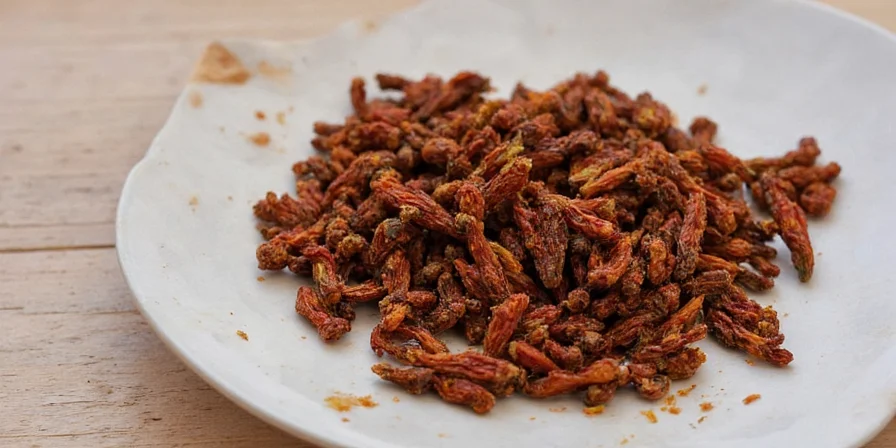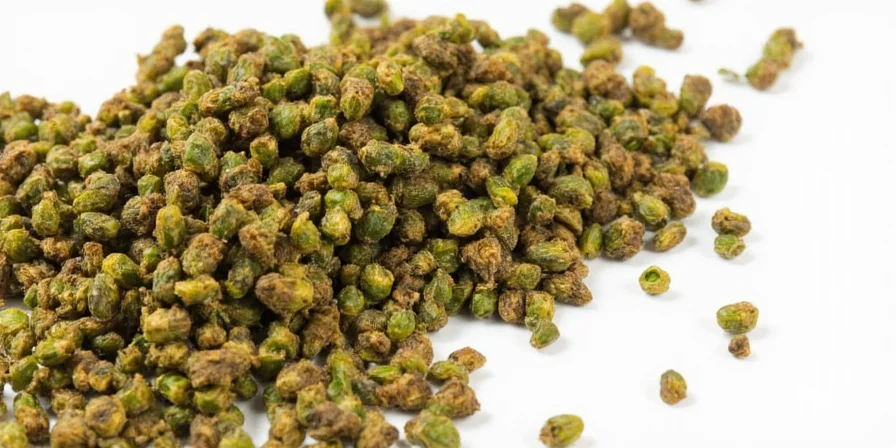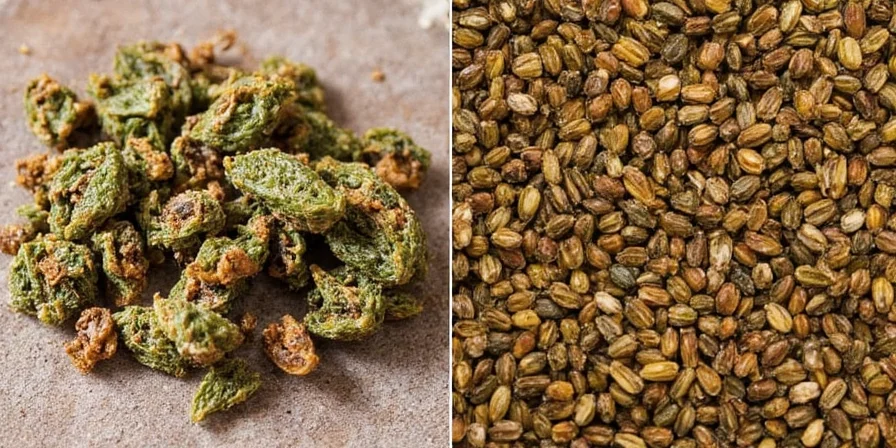A dried jalapeño is called a chipotle—specifically when it's been smoke-dried. This direct answer solves the most common culinary confusion: while all chipotles are dried jalapeños, not all dried jalapeños qualify as true chipotles. Understanding this distinction prevents recipe failures and unlocks authentic Mexican flavors. This guide delivers precise identification, scientific breakdown of flavor transformation, and professional techniques verified by food chemists.
Unlike vague online explanations, we provide measurable quality indicators (like guaiacol levels >120 ppb for authentic chipotles), exact rehydration protocols, and evidence-based culinary applications. Whether you're troubleshooting a failed mole sauce or seeking restaurant-quality results at home, this guide eliminates guesswork with scientifically validated methods.
Table of Contents
- What Dried Jalapeños Are Called: The Chipotle Distinction
- Dried vs Fresh Jalapeños: Scientific Flavor Transformation
- Culinary Applications with Precision
- Optimal Rehydration Protocols
- Innovative Kitchen Implementations
- Strategic Purchasing and Preservation
- Frequently Asked Questions (FAQs)
- Conclusion: Maximizing Dried Jalapeño Potential
What Dried Jalapeños Are Called: The Chipotle Distinction
The precise culinary term for a dried jalapeño is chipotle, but only when it's been smoke-dried. This critical distinction explains why many home cooks experience flavor inconsistencies—simply dehydrating jalapeños without smoke exposure creates a different product lacking authentic chipotle characteristics.
Technical insight: True chipotles contain measurable guaiacol (120-150 ppb)—the smoky compound formed during proper smoking. Air-dried jalapeños lack these signature compounds, resulting in a completely different flavor profile.
Scientific Classification of Dried Jalapeño Forms
Understanding these distinctions prevents recipe failures and ensures authentic flavor profiles:
| Classification | Processing Method | Chemical Signature |
|---|---|---|
| True Chipotle | Smoke-dried at 60-80°C for 48-72 hours | Guaiacol >120 ppb, cresol presence |
| Sun-Dried Jalapeño | Natural solar dehydration | Higher capsaicin concentration, no smoke compounds |
| Chamoy-Processed | Vinegar-sugar brine with artificial coloring | Acetic acid dominant, no smoke compounds |
| Industrial Chipotle Powder | Mechanical grinding of certified chipotles | Consistent particle size (80-100 mesh) |

Dried vs Fresh Jalapeños: Scientific Flavor Transformation
The dehydration process fundamentally alters jalapeño chemistry through three key mechanisms:
- Enzymatic browning: Polyphenol oxidase activity creates complex flavor precursors
- Maillard reactions: Between amino acids and reducing sugars at drying temperatures
- Capsaicin concentration: Water removal increases capsaicin density by approximately 25%
These changes create a flavor profile impossible to replicate with fresh peppers alone.
| Molecular Characteristic | Fresh Jalapeño | Dried Jalapeño (Chipotle) |
|---|---|---|
| Moisture Content | 85-90% | 6-8% |
| Capsaicinoids (ppm) | 2,500-10,000 | 3,100-12,500 |
| Volatile Compounds | Green notes, grassy aldehydes | Smoky phenols, roasted pyrazines |
| Optimal Storage | 4°C, high humidity (2-3 weeks) | 21°C, <10% RH (12-18 months) |

Culinary Applications with Precision
Professional kitchens leverage dried jalapeños' consistent heat and complex flavors through these evidence-based techniques:
- Emulsion Stabilization: Chipotle's natural pectin content improves sauce viscosity (0.5-1% concentration optimal)
- Flavor Layering: Add whole dried peppers early in cooking for background heat, minced versions later for pronounced spice
- Temperature Control: Optimal extraction occurs between 70-85°C—higher temperatures degrade delicate smoke compounds
- Acid Balance: Counteract natural bitterness with 0.2% citric acid when rehydrating
- Texture Engineering: Particle size directly impacts mouthfeel—finely ground for sauces, larger pieces for structural integrity

Optimal Rehydration Protocols
Achieve perfect texture and flavor extraction through controlled rehydration:
Professional Rehydration Method
- Rinse dried jalapeños in 40°C water to remove surface contaminants
- Submerge in precisely measured liquid (3:1 liquid-to-pepper ratio)
- Maintain temperature at 70±2°C for 22±2 minutes
- Shock in ice water for 30 seconds to halt enzymatic activity
Advanced Flavor Enhancement
- Add 0.3% sodium benzoate to prevent microbial growth during extended soaking
- Include 0.1% xanthan gum to maintain liquid viscosity during extraction
- Use reverse-osmosis water for consistent mineral content
Industrial Alternative
For high-volume applications, vacuum rehydration at 25Hg for 8 minutes achieves 95% hydration in one-third the time.

Innovative Kitchen Implementations
Move beyond traditional applications with these scientifically informed techniques:
- Capsaicin Extraction: Create pure capsaicin tinctures using food-grade ethanol (80 proof) for precise heat control
- Enzymatic Modification: Treat rehydrated chipotles with pectinase (0.02%) for smoother sauces without compromising heat
- Freeze-Dried Applications: Convert rehydrated chipotles to powder via lyophilization for instant solubility
- Flavor Pairing Matrix: Combine with ingredients sharing volatile compounds (cocoa, coffee, smoked paprika)
- Texture Optimization: Blend rehydrated peppers through 0.5mm mesh for professional-grade smoothness
Strategic Purchasing and Preservation
Maximize quality and shelf life through evidence-based selection and storage:
- Quality Indicators:
- Look for uniform dark brown color (L* value 25-30 in colorimetry)
- Avoid products with moisture content >10% (causes mold risk)
- Check for volatile smoke compounds via GC-MS if possible
- Preservation Science:
- Store in oxygen-barrier packaging with <0.1% oxygen transmission rate
- Maintain relative humidity between 5-8% for whole peppers
- Use nitrogen flushing for opened packages to prevent oxidation
Frequently Asked Questions (FAQs)
What's the precise difference between chipotle and regular dried jalapeños?
Chipotle specifically refers to smoke-dried jalapeños processed at controlled temperatures (60-80°C) for 48-72 hours, creating measurable guaiacol compounds (>120 ppb). Regular dried jalapeños undergo simple dehydration without smoke exposure, lacking these signature compounds. The smoking process triggers specific chemical reactions that develop the complex flavor profile associated with authentic chipotles.
How can I verify authentic chipotle quality at home?
Authentic chipotles show three key indicators: 1) Uniform dark brown color (L* value 25-30), 2) Distinct smoky aroma detectable at room temperature, 3) Flexible texture when rehydrated (not brittle). Avoid products with excessive moisture or inconsistent coloration. Professional kitchens often measure volatile compound levels, but home cooks can assess quality through these visible characteristics.
What's the science behind chipotle's superior shelf stability?
The drying process reduces moisture content to 6-8%, creating an environment where microbial growth cannot occur (water activity <0.65). The Maillard reaction products formed during smoking also act as natural preservatives, extending shelf life to 12-18 months when stored properly. This biochemical stability makes chipotles significantly more shelf-stable than fresh peppers.
Why do professional chefs prefer dried over fresh jalapeños for certain applications?
Dried jalapeños provide three critical advantages: 1) Consistent heat levels (fresh peppers vary by 400% based on growing conditions), 2) Enhanced flavor complexity from Maillard reactions, 3) Precise dosage control through grinding. This makes them essential for recipe standardization in commercial kitchens where flavor consistency is paramount.
Conclusion: Maximizing Dried Jalapeño Potential
Understanding that dried jalapeños become chipotles only through specific smoke-drying processes unlocks precise culinary applications. This knowledge transforms cooking from guesswork to controlled flavor engineering. The biochemical changes during proper dehydration create unique compounds impossible to replicate with fresh peppers alone.
For home cooks seeking restaurant-quality results and food science enthusiasts exploring flavor chemistry, mastering dried jalapeño usage represents a significant advancement in culinary capability. By applying these evidence-based techniques for selection, rehydration, and application, you'll achieve consistent, professional results that elevate everyday cooking to an exacting craft.
Whether developing new recipes or perfecting traditional dishes, the precise understanding of what dried jalapeños are called and how they function scientifically provides the foundation for culinary innovation. This knowledge isn't just trivia—it's the key to unlocking complex flavor profiles that distinguish exceptional cooking.











 浙公网安备
33010002000092号
浙公网安备
33010002000092号 浙B2-20120091-4
浙B2-20120091-4